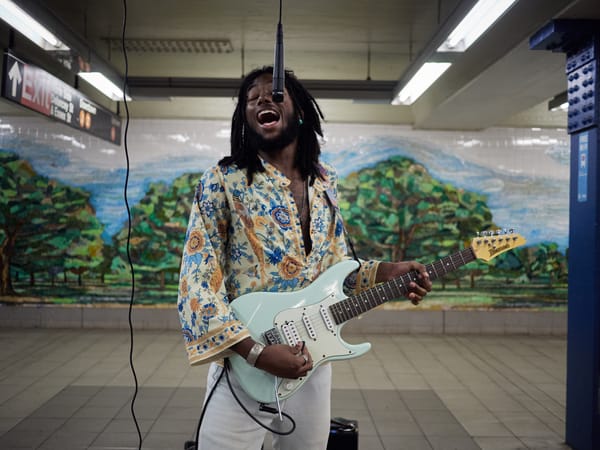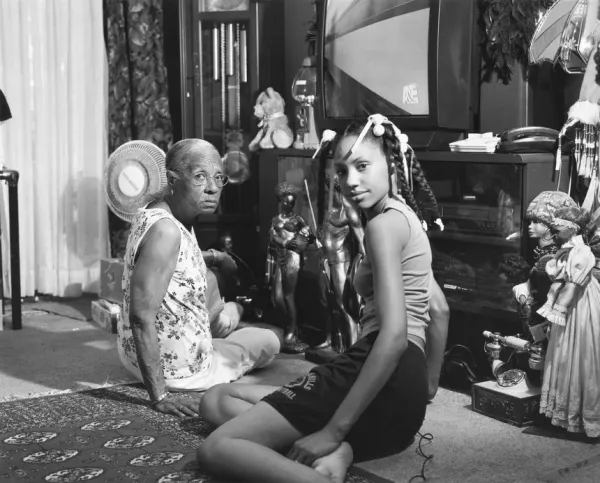Shifting the Gaze with Campbell Addy

Reimagining Beauty, Identity, and Representation
In a world flooded with images, some photographers manage to cut through the noise. Not by shouting louder, but by seeing deeper. Campbell Addy is one of those artists.
His portraits are bold and cinematic. They are rich in colour, culture, and symbolism. But behind the visual power lies something more lasting, a clear intention to challenge norms and widen the frame. Through fashion editorials, fine art photography, and personal storytelling, Addy is reshaping how Black identity, queerness, and beauty are seen and celebrated.
This blog post explores how Campbell Addy is redefining representation on his own terms. It looks at how his work embodies the Black gaze, how it speaks to both personal truth and collective power, and how he continues to influence the worlds of fashion, art, and culture from the inside out.
Introducing Campbell Addy
Campbell Addy is a British-Ghanaian photographer, filmmaker, and creative director. Born and raised in South London, Addy studied at Central Saint Martins before launching his own creative agency and magazine, Nii Journal. From the start, he understood that representation is not just about being visible. It’s about being seen with care and complexity.
Addy’s photography has been featured in Vogue, i-D, Dazed, Time, and Rolling Stone. He has shot high-profile figures including Beyoncé, Naomi Campbell, and Edward Enninful. But even in glossy, high-fashion settings, Addy’s work doesn’t lose its grounding. His images always hold a sense of intention, identity, and intimacy.
His style is distinct — rich colours, sculptural lighting, sharp composition — yet the stories he tells remain human. His subjects are framed with reverence. They appear confident, powerful, and fully present.
Expanding the Language of Beauty
Much of Addy’s work revolves around beauty, but not in the conventional sense. He challenges who gets to be seen as beautiful, and how beauty is defined in the first place. His images celebrate darker skin tones, non-Western features, and gender expressions that don’t always fit into the binary.
He doesn’t ask for permission. He creates space.
In doing so, Addy joins a long tradition of artists who use aesthetics as activism. His use of lighting, texture, and styling is deliberate. He uses these elements to elevate his subjects, not erase them. His work says, “You are enough, just as you are,” while also inviting viewers to rethink their own visual assumptions.
His Ghanaian heritage is often woven into his work, whether through colour palettes, fabrics, or religious and cultural references. This gives his photography a layered depth. It becomes not just visual, but ancestral.
Practising the Black Gaze
The Black gaze is not only about who is behind the camera, it is about how the world is seen, interpreted, and reimagined through Black experience. Addy’s work is deeply informed by this lens.
He resists stereotypes by offering nuance. His images of Black and queer subjects are powerful because they are not filtered through an outsider’s curiosity. They come from within. Addy is telling stories he knows, stories he has lived, stories he still carries.
His portraits often reflect a duality, both vulnerability and strength, softness and boldness. These contrasts create space for complexity. His subjects are never one thing. They hold multitudes. In doing so, Addy refuses to simplify or flatten identity for the sake of consumption.
This gaze extends beyond the camera. Through Nii Journal and Nii Agency, Addy is building platforms for others to be seen as well. He is not just shifting the gaze. He is sharing it.
Lessons from Campbell Addy’s Practice
Campbell Addy’s career offers powerful lessons for artists, creatives, and cultural leaders:
- Make your own space. When the industry lacked room, Addy built his own platforms.
- Honour your roots. His work draws strength from culture, memory, and ancestry.
- Show complexity. Addy’s subjects are never one-dimensional — and that is the point.
- Lead with care. His portraits are grounded in trust and cultural understanding.
- Use beauty as resistance. Aesthetics can challenge systems when used with intention.
Expanding the Lens
Campbell Addy is part of a dynamic group of Black British photographers who are transforming how we see ourselves and each other.
He works alongside artists such as:
- Misan Harriman, whose protest photography and portraiture document truth and empower community
- Adama Jalloh, whose black and white images highlight everyday moments with honesty and grace
- Ronan McKenzie, who creates intimate, emotionally resonant portraits grounded in care and culture
- Karis Beaumont, whose vibrant work explores identity, fashion, and belonging in Black British life
Together, they are not only changing the imagery. They are changing the industry. They are creating new standards, new platforms, and new ways of seeing.
Conclusion
Campbell Addy’s photography is a celebration and a confrontation. It celebrates identity, creativity, and presence. It confronts stereotypes, exclusion, and narrow ideas of beauty. His work is as personal as it is political, and that is where its strength lies.
Through his lens, we see a world that is expansive and inclusive. A world where Black, queer, and marginalised bodies are not just represented, but respected.
Addy reminds us that photography is not neutral. It is always a choice, about what to include, what to elevate, and what to challenge. By practising the Black gaze, he chooses to centre truth, care, and possibility.
And by following his work, we are invited to do the same.
Add your voice
Through The Black Gaze, we don’t just reflect the world, we reshape it. Your story matters. Share it. Honour it. Hold space for others. This is where truth lives and vision leads.
We invite Black photographers to contribute in two meaningful ways through story and image.






